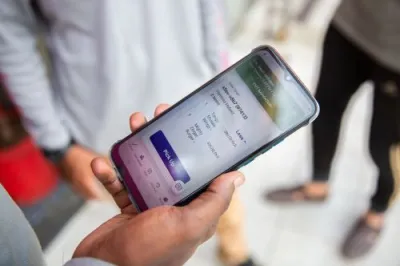Myanmar: A Changing Role for Microfinance after Natural Disaster
Client demand for formal financial services is not always straightforward: there isn’t always a critical mass of people saying “I want that specific service.” Sometimes clients are able to better articulate what they don’t want, such as the burden of mitigating external risks.
Cyclone Nargis hit the Ayerwaddy Delta area of Myanmar on May 2, 2008. It was the most destructive natural disaster in the history of Myanmar and one of the deadliest cyclones in the region. The death toll reached at least 138,000 and the storm caused over $10 billion in damage. Pact Global Microfinance Fund (PGMF)—the leading microfinance institution in Myanmar with over 613,000 active clients — was providing microfinance services in the Delta area at the time. The organization suffered along with the rest of the country: approximately 4,500 of its clients died, five of the fifteen staff of the Pyinsalu coastal branch (one of 35 branches in the affected area) died, and disbursement and collection of microloans in the Delta effectively stopped. PGMF switched from providing microfinance services to providing humanitarian aid.
Photo Credit: Jason Meikle
As the situation in the Delta began to stabilize, PGMF began to consider the impact of the disaster on its clients and on the organization itself. There was no question of seeking repayment of loans in many areas—clients were dispersed, had lost everything and were in no position to repay, and some had even died—but writing off the loans was financially difficult for the organization. Pact’s loan loss reserve was not sufficient to cover the loss; eventually, UNDP and its donors allocated $2.9 million just to cover loan write-offs. Many clients wanted to repay their loans but had no means to do so; others wanted to restart their businesses but had lost all of their assets. Writing off existing loans helped relieve some of the financial pressure, but clients wanted more—they wanted to return their lives. After six months, microfinance activities restarted and a semblance of normal life returned to the Delta.
PGMF, however, decided to make a big change. Clients said they wanted to repay loans, they said they wanted to rebuild their homes and businesses. How could PGMF ensure that after any future disasters this would be possible? Driven by the needs of its clients and a desire to support them in times of difficulty, PGMF established the Beneficiary Welfare Program (BWP), a safety net to protect clients in times of need. Both clients and PGMF contribute to the program’s fund, which is managed by PGMF. In times of difficulty—livestock epidemic, natural disaster, even death—affected clients or their next-of-kin can file claims against the BWP and receive compensation in the form of loan write-off, cash, or both, depending on the circumstances.
Photo Credit: Win Tin Peters
Since 2008 the program’s fund has grown significantly, despite paying various claims on a monthly basis. In fact, it has grown so much that in 2013 PGMF began looking at other benefits that could be given through the fund. Loan officers collected anecdotal information from clients around the country. One common issue that seemed to affect PGMF clients everywhere was maternal health care. Since 98% of PGMF clients are women, childbirth has a double impact on their ability to keep their businesses going to feed their families and make loan payments. Not only do they have to take time out of the business for childbirth, but hospital and even village midwife fees are relatively expensive. PGMF did some research into the national birthrate and the birthrate amongst PGMF clients and on the average cost of natural childbirth at home or in a hospital, or by caesarian section. Management made the determination that a tiered system paying increasingly higher benefits for these three types of childbirth would not significantly impact the ability of the BWP to grow. At the same time, it would help address the double economic strain of childbirth for PGMF clients and hopefully would also help convince some of them to seek better medical care.
The addition of the Beneficiary Welfare Program has been a huge success, and it has enabled PGMF to help its clients access the services they need even when they can’t articulate exactly what those needs are. The childbirth benefit has been a tremendous incentive for customers to take out loans with PGMF. Loan officers sometimes complain about this, but management considers it a success: the women are getting what they perceive to be a valuable service and will most likely remain clients for a long time. There is one small problem. Some elderly clients want to know what the BWP can do for them, as they are past childbearing age. Perhaps this is the making of a new benefit of PGMF’s Beneficiary Welfare Program!




Comments
Fascinating, though I am
Fascinating, though I am curious why microinsurance or microservices were not used instead of an internal fund. Was it a lack of interest from insurers? A regulatory obstacle to using insurance? A conscious decision by the MFI based on a preference for autonomy?
Interesting historical read.
Interesting historical read. thanks
It'd be interesting to hear
It'd be interesting to hear whether and how Pact is assessing BWP's impact...
there is no financial data
there is no financial data included - how much money has been raised by the Beneficiary Welfare Program and what is the size of the average disbursement?
Add new comment